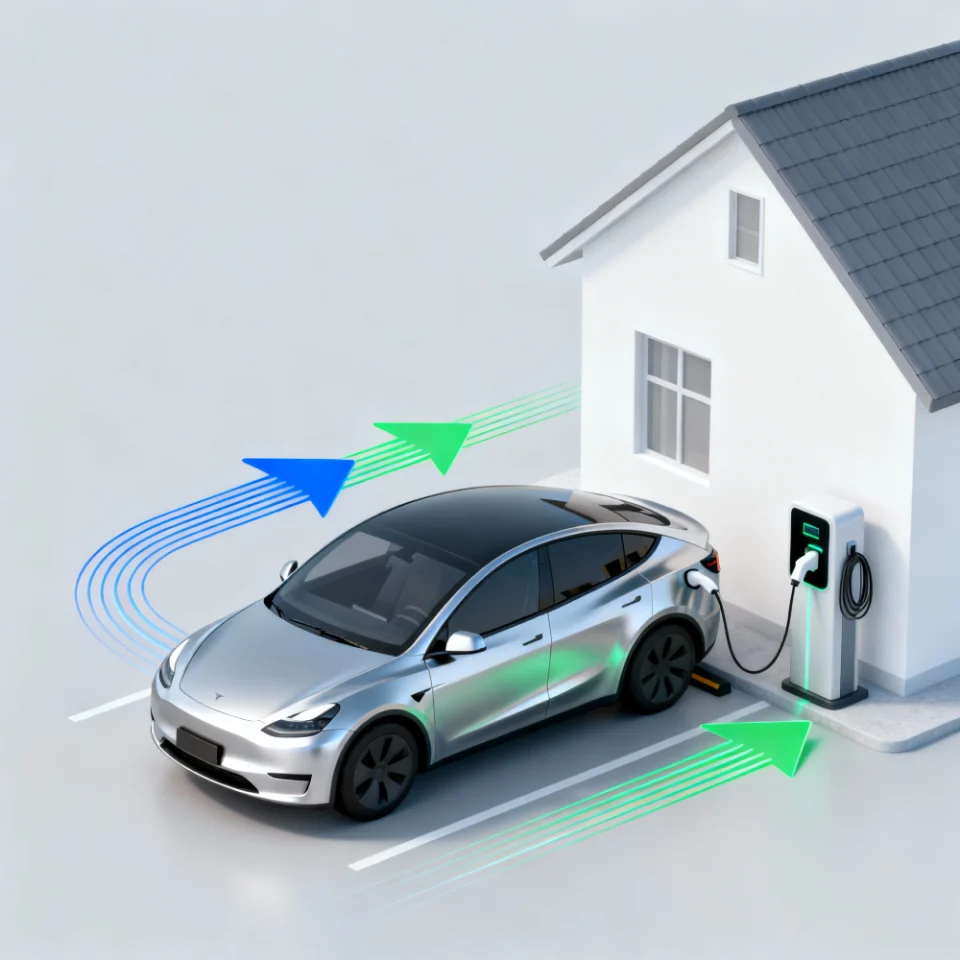V2H: your electric car becomes your home battery


For decades, the car has been perceived exclusively as a means of transportation. However, with technological advances and the e-mobility revolution, new possibilities are opening up that go far beyond everyday travel.
Innovative Vehicle-to-Home (V2H) technology enables the electric vehicle not only to consume energy, but also to return it to the home grid. In this way, your electric car turns into a true energy storage system for your home, with capacities of up to 60-100 kWh, enough to power a home for several days.
V2H is the ability of an electric vehicle to transfer energy stored in its battery, reversing the traditional charging process. While until now charging was a unidirectional flow from the grid to the vehicle, with this technology the transfer becomes bidirectional, allowing the car to power the house when needed.
This innovation represents a paradigm shift in the way we think about both mobility and household energy. The electric vehicle battery, which normally sits unused for most of the day when the car is parked, becomes an active resource in the home energy economy.
To take advantage of this technology requires specific components that can handle the two-way energy flow:
V2H technology offers multiple economic and energy benefits that make it an increasingly attractive solution for electric vehicle owners:
A typical V2H system operates automatically and intelligently. During the night, when rates are lower and the vehicle is not being used, the battery is fully charged. During the day, the system monitors energy prices in real time, and when they rise above a certain threshold, it begins to draw energy from the vehicle's battery to power the home.
The system always takes into account the user's mobility needs, ensuring that the battery always maintains a minimum charge sufficient for planned trips. For example, if you have set that every morning you need 30 km of range to go to work, the system will never discharge the battery below this threshold.
V2H technology now represents a concrete reality that transforms the electric vehicle into a central element of thehome energy ecosystem. No longer just a means of transportation, but a smart resource for optimizing consumption, reducing costs and increasing your home's energy independence.
As energy costs continue to rise and renewables become increasingly popular, V2H is positioned as one of the key technologies for the transition to a more sustainable, distributed, and efficient energy system. Investing in this technology today means preparing for the future of household energy.
V2H represents the future of home energy, but the electric mobility revolution is already underway. Powy supports businesses, hotels, parking garages, and many other partners in offering smart, professionally managed charging solutions, making each facility a benchmark for sustainable mobility.
Become a key player in the electric transition with Powy charging stations: click here to find out which partnership model is right for your business and start generating value from electric mobility.
No, if used correctly. V2G/V2H/V2L systems are designed to manage charge and discharge cycles in a way that preserves battery life. Studies show that the impact is minimal if the system is well configured.

Powy is a company that owns, develops and operates Italy's leading independent network of public charging infrastructure for electric vehicles, with a growing presence in Spain as well.
Founded in Turin, Italy in 2018, Powy is at the center of the transition to more sustainable mobility, offering an innovative charging infrastructure that uses only 100 percent renewable energy.
Powy 's network includes quick, fast, and ultra-fast charging solutions strategically placed in public and private parking lots, supermarkets, shopping malls, and transportation hubs to ensure maximum convenience and accessibility for EV drivers. Each station is equipped with advanced technologies to provide a reliable and efficient charging experience.
Learn more: wpowy.energy